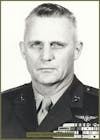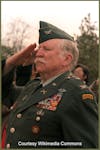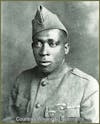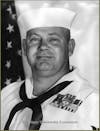A Hero's Journey: US Air Force Colonel George 'Bud' Day - Medal of Honor Recipient
Join us as we delve into the inspiring true story of Colonel George 'Bud' Day, a true American hero and Medal of Honor recipient. From leaving high school to fight in World War II to flying various jets during his military s...
Join us as we delve into the inspiring true story of Colonel George 'Bud' Day, a true American hero and Medal of Honor recipient. From leaving high school to fight in World War II to flying various jets during his military service, Colonel Day's journey is one of courage, resilience, and unwavering dedication. Learn about his survival through a traumatic aircraft crash and his remarkable strength during over five years of captivity as a POW. Discover how Colonel George 'Bud' Day's legacy continues to inspire us all. Listen now to honor his remarkable contributions to our nation's history.
Please visit our website to learn more about other American Heroes.
www.dutyandvalor.com
Sources:
wikipedia.org
wikitree.com
af.mil
va.gov
nationalmuseum.af.mil
cmohs.org
Thank you for listening to Duty & Valor!
Music by Amelie Leclerc. Artist's other music can be found here.
Please follow us on your favorite social media site.
Facebook
Instagram
Twitter
YouTube
Welcome back everyone. On this episode of Duty & Valor, you’ll hear the story of a man who dropped out of high school to fight in World War II. A man who flew nearly every jet that was in service during his time in the military. A man who survived an aircraft crash just to be captured and held as a POW for over 5 years. This is the story of Medal of Honor recipient US Air Force Colonel George Day.
Born on Feb. 24th 1925 to parents John and Christine Day of Sioux City, Iowa, George, who would go by “Bud”, was the second of two children. The family was a hard working one, but they struggled and lived in the poorest part of Sioux City. While George was still in high school, the US had entered World War II and he wanted to enlist. He dropped out of high school at the age of 17 and received two waivers to enlist, one for his age and the other due to being underweight. On December 10th, 1942 he enlisted in the US Marine Corps. While in the Corps, he was sent to Johnston Island in the North Pacific and was a part of a gun battery of the 3rd Defense Battalion. He served there for 30 months and was discharged in November 1945.
The following year George joined the Army reserve while he was attending college and received his law degree from the University of South Dakota. In May of 1950 he received his commision into the newly formed United States Air Force, which was formerly part of the US Army Air Corps until 1947. He was a member of the Iowa Air National Guard until being called into active duty in March of 1951, and he was sent to Webb Air Force Base in Texas, where he received his pilot's wings.
In February 1953, George was seated in the F-84 ThunderJet, part of the 559th Strategic Fighter Squadron in Northern Japan, where they supported aerial operations during the Korean War. Following his two tours there, George was promoted to Captain and was folded into the regular Air Force.
He was then sent to the United Kingdom where he was an F-100 Super Sabre pilot for the 55th Air Bomber Squadron at RAF Wethersfield from 1955 to 1959. While there he was forced to bail out of his F-100. His parachute failed to open properly and he crashed into a 30-foot Pine tree, luckily slowing his fall. He became the first person to survive an incident where a chute failed to deploy properly after bailing from a jet plane.
George was now a Major and had over 4,500, out of 5,000 total flying hours, in fighter jets. Though he was nearing retirement, Major Day volunteered for service in Vietnam. There he was a member of the 31st Tactical Fighter Wing. In 1967 he was given command of Detachment 1 of the 416th Tactical Fighter Squadron, 37th Tactical Fighter Wing at Phu Cat Air Base. Members of this top secret unit were volunteers, but they had to meet strict requirements to join. His detachment flew four two-seat F-100F, which were to be utilized as a forward air control aircraft.
On August 26th 1967, Major Day was in his F-100F, with the call sign Misty 1 as a check pilot. He was observing Captain Corwin “Kipp” Kippenhan as part of his upgrade to aircraft commander. During this check flight they were directing a flight of F-105 Thunderchiefs on an air strike against a surface-to-air missile site in North Vietnam. This was Major Day’s 25th Forward Air Control sortie, out of the 65 he has flown to date during the war.
During this mission, their aircraft was hit and crippled by a 37mm anti-aircraft round. The two men were forced to eject from the jet as it plunged to the ground. As he was ejecting, Major Day hit the plane's fuselage so hard that the impact broke his arm in three places, sprained his left knee and injured an eye and his back.
Captain Kippenhan was eventually rescued by an Air Force rescue helicopter, but Major Day was not able to contact anyone with his survival radio, and it didn’t take long before he was captured by North Vietnamese militia. He was taken to an underground shelter where he was stripped of his boots and flight suit. Now without proper clothing and badly injured, his captors felt that Major Day was no threat to escape. But on the night of the fifth day of his confinement, he proved them wrong. He was able to sneak away under the cover of darkness. When his plane went down, Major Day was approximately 25 miles north of DMZ that separated North and South Vietnam. Over ten grueling days, surviving by eating just fruit and uncooked frogs, he made his way south. During his trek he was further injured when a bomb detonated dangerously close to him.
After making his way across the Ben Hai River in South Vietnam, only two miles from a Marine Corps Base, he was spotted by North Vietnamese soldiers and shot in his left thigh and hand.
He was recaptured and sent back to his original captors who tortured him for escaping. During their retribution, they broke his arm again. He was later sent to the infamous Hanoi Hilton. He was offered no medical care and his injuries were left untreated. While there he shared a small cell with future Senator John McCain. Both men were continually tortured and starved. Another POW, Major Norris Overly treated both men and nursed them back to health. It was also reported that McCain would later make a splint out of bamboo for Major Day’s severely injured arm.
While confined at the Hanoi Hilton, Major Day had a reputation of steadfast resistance and defiance. This led to his move to a punishment camp called the “Zoo”. In one instance, POW’s had gathered for a religious service, which was strictly forbidden. The guards were armed with rifles and burst into the room. Major Day stood in front of them and stared them down hard before he began to sing the Star Spangled Banner as a form of protest. James Stockdale, another POW in that room, whose story I covered in a previous episode, stood up and joined in the singing.
During his 5 year and 7 month confinement, Major Day was continually beaten, and deprived of food. His wounds never healed properly and he had lost over 100 pounds by the time he was released on March 14th, 1973. Three days later he was reunited with his wife Doris and four children Steven, George Jr., Sandra, and Sonja.
During his confinement, he was promoted twice and in March 1976 President Ford bestowed the Medal of Honor upon Col. George “Bud” Day.
He would go on to retire in December 1977 after he was passed over for promotion to Brigadier General. During his career that spanned 35 years and three wars, Col. Day had 8,000 flying hours in nearly every jet of the era. In addition to the Medal of Honor, hIs distinguished service saw him being awarded the Air Force Cross, Air Force Distinguished Service Medal, and the Silver Star among the 70 he earned, 50 of which were combat related.
After retirement, Col. Day used his law degree to help ensure Veterans received the benefits that they were entitled to. In 1991 he wrote a book titled Return With Honor, which told of his time during confinement, and in 2002 he released his second book Duty, Honor, Country which also included his years after the Vietnam War.
The severity of the injuries he received during the crash and subsequent years of torture meant he suffered greatly for the rest of his life.
Colonel Day passed away on July 27th, 2013 in Shalimar, Florida and he is buried at the Naval Air Station Pensacola.
On June 8th, 2018 he was posthumously promoted to Brigadier General.
George Day's life embodies the indomitable spirit of courage and resilience that defines true heroism. From his early days in the Marine Corps to his remarkable service as a pilot during the Vietnam War, Day displayed an unwavering commitment to duty and honor. Captured and subjected to unimaginable hardships as a POW, he emerged as a beacon of hope and leadership among his fellow captives, embodying the virtues of strength and camaraderie.
Thank you for listening to this episode of Duty & Valor. If you have not done so already, I kindly ask you to leave a review and follow us wherever you're listening, as this small act helps us reach a wider audience.
For those interested in learning more about Col. George Day, I've provided links to all sources used in today's episode in the show notes and on our website, dutyandvalor.com. Don't forget to join us for our next episode where I’ll tell the story of another true American hero.




















